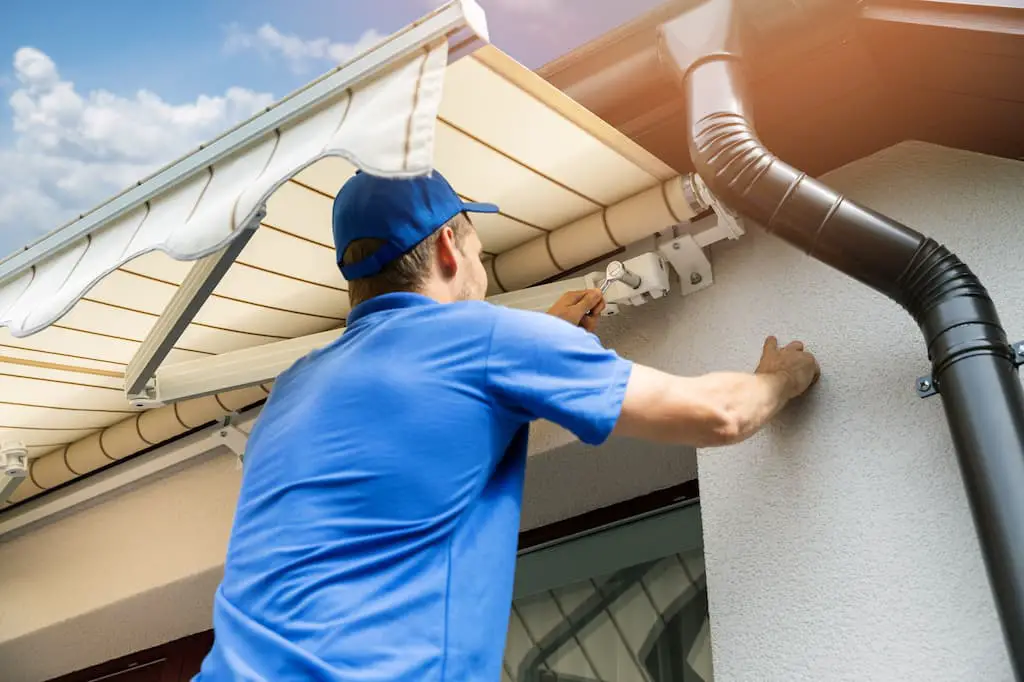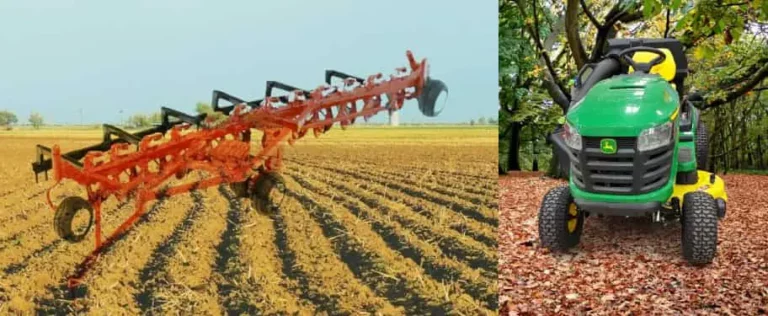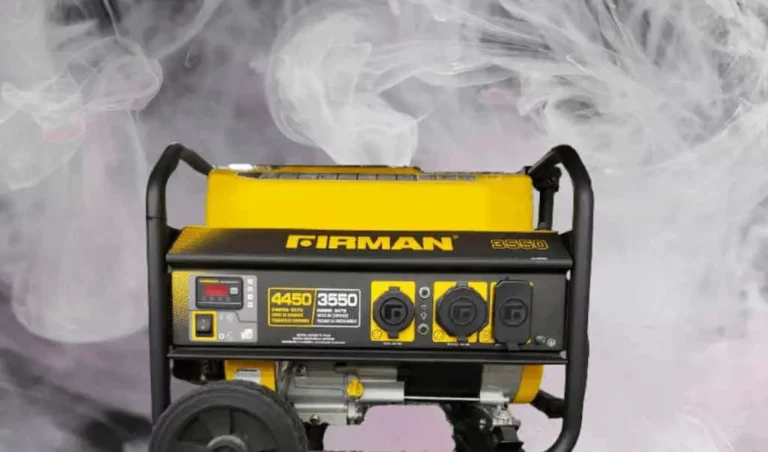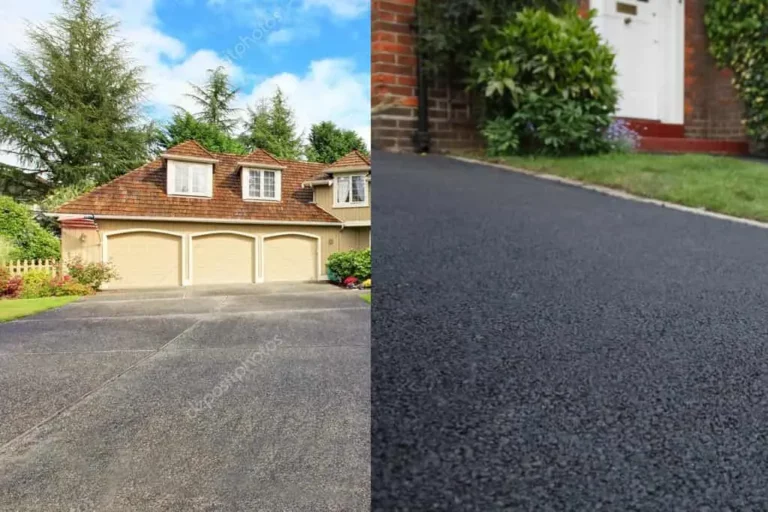Repair Tips for Jammed Retractable Awnings

Imagine you’re out at sea, effortlessly steering your boat until suddenly, the rudder becomes stuck; much like when your retractable awning decides to jam, leaving you with a stubborn shade that refuses to budge.
You’ve probably invested a significant amount in your outdoor space, expecting seamless operation, only to find yourself grappling with a mechanism that’s as uncooperative as a locked treasure chest. But don’t let this hurdle discourage you just yet. With some knowledge, a bit of effort, and the right tools, you can navigate these challenging waters.
The secret to smooth sailing—or, in this case, retracting—may lie in understanding the intricacies of the awning’s mechanics and learning how to properly maintain them. You’re about to embark on a journey to regain your awning’s functionality, and the map to unjamming this modern convenience lies just ahead, marked with clear signs to guide you through the rough patches.
Common Causes of Jammed Retractable Awning Mechanisms
Clearing obstacles is the initial step to resolving jammed retractable awning mechanisms. Occasionally, branches or debris can obstruct the awning’s movement, causing it to become stuck. To rectify this issue, you must remove any obstructions that may impede its path. Once done, you can address other common problems associated with retractable awnings.
One prevalent issue with retractable awnings is sagging. This can occur when the canopy is extended beyond its intended limit. To remedy this, turn the handle in the opposite direction to retract the canopy.
Another problem you may encounter is the direction in which the fabric rolls. It’s crucial to ensure that the fabric rotates over the top of the roller tube, rather than winding underneath it. This will prevent unnecessary strain on the mechanism.
Mechanical issues such as jerking or jamming may indicate motor damage. In such cases, it’s advisable to seek professional repair. Sticking or off-track awnings can often be resolved by cleaning the tracks and applying lubricant. By inspecting the tracks for smooth operation and lubricating them with a silicone-based lubricant if necessary, you can ensure that your awning operates seamlessly.
Checking the Fabric Rolling Direction
To ensure optimal performance and longevity of your retractable awning, it’s crucial to verify the direction in which the fabric rolls over the roller tube. This seemingly minor detail can significantly impact the functionality of your awning.
Here are several reasons why checking the fabric rolling direction is essential:
- Prevents fabric wear and tear: Rolling the fabric over the top of the roller tube reduces friction and minimizes the risk of the fabric getting caught or damaged during operation.
- Follows manufacturer’s instructions: Most motorized retractable awnings come with specific guidelines on how the fabric should roll. Adhering to these instructions ensures that your awning operates as intended and avoids potential issues.
- Promotes smooth operation: Rolling the fabric in the correct direction allows for seamless extension and retraction of the awning. This eliminates any jerking or jamming that may occur if the fabric rolls in the wrong direction.
- Extends the lifespan of your awning: By checking the fabric rolling direction, you can prevent unnecessary strain on the motor and other components of your retractable awning. This helps prolong its lifespan and reduces the need for frequent repairs.
Troubleshooting Motor Issues
If you’re experiencing issues with the motor of your retractable awning, there are some troubleshooting steps you can take to identify and potentially fix the problem.
First, check the power source and make sure it’s turned on. Sometimes, the awning may not be receiving electricity, so confirm this.
Next, inspect the motor for any loose or disconnected wires. If you find any, tighten the connections to see if that resolves the issue.
It’s best to consult a professional for assistance if you need clarification on electrical repairs.
Motor problems can be frustrating, but by following these troubleshooting steps, you can get your motorized awning back in working order.
Remember to check the power source, confirm electricity flow, and inspect the motor for loose wires. By taking these steps, you can narrow down the potential causes of the problem and determine whether it can be fixed on your own or if professional help is needed.
Troubleshooting motor issues is an important part of awning troubleshooting, so don’t hesitate to take action and get your retractable awning functioning properly again.
Cleaning and Lubricating the Tracks
To ensure the proper functioning of your motorized awning, it’s crucial to regularly clean and lubricate the tracks. Over time, dirt, debris, and grime can accumulate, causing the awning to stick or operate unevenly. Following a few simple steps, you can keep your retractable awning in excellent condition and enjoy smooth operation whenever needed.
Here’s how to clean and lubricate the tracks:
- Use a gentle detergent and water solution to clean the tracks thoroughly. Remove any dirt, debris, or residue that may be hindering the movement of the awning.
- After cleaning, apply a silicone-based lubricant to the tracks. This will help reduce friction and ensure effortless movement of the awning.
- Be sure to distribute the lubricant evenly along the entire length of the tracks. This will prevent any areas from sticking and causing the awning to jam.
Regularly maintaining the tracks, including cleaning and lubrication, will help prevent awning problems and ensure a smooth operation.
Repairing Damaged Fabric
To mend damaged fabric on your retractable awning, begin cleansing it with a mild soap and water solution to eliminate dirt and debris. This will help prepare the fabric for further repairs. You can utilize a fabric repair adhesive or patch kit for minor tears or holes in the fabric. Apply the adhesive or patch following the manufacturer’s instructions, ensuring it’s securely affixed to prevent additional harm. It’s crucial to avoid using abrasive cleaners, as they can cause further damage to the fabric.
If the fabric damage is significant or extensive, consider replacing the fabric entirely. This won’t only restore the aesthetics of your awning but also ensure its functionality. When replacing the fabric, it’s advisable to consult a professional repair company. They possess the expertise and knowledge to handle the task efficiently and effectively.
Remember to take into account the weather conditions when repairing fabric damage. Retract the awning during strong winds to prevent further harm. Also, angle the shade to prevent rain or snow accumulation, as excessive moisture can lead to mold growth and further deterioration of the fabric.
Properly Addressing Environmental Factors
Now, let’s shift our focus to properly addressing the environmental factors that can impact the longevity and functionality of your retractable awning. Considering these factors will help ensure your awning stays in good condition and operates smoothly for years.
Here are a few important steps you can take to address environmental factors:
- Retract the awning during strong winds: Strong gusts of wind can put a lot of stress on your awning, potentially causing it to become jammed or even damaged. To avoid this, make it a habit to retract your awning when you know strong winds are in the forecast.
- Install an anemometer for automatic retraction: Consider installing an anemometer, a device that measures wind speed. This can automatically retract your awning when wind speeds reach a certain threshold, providing an extra layer of protection.
- Angle the shade to prevent rain or snow accumulation: When it’s raining or snowing, it’s important to angle your awning properly to prevent water from pooling on the fabric. This will help extend the fabric’s lifespan and prevent any potential damage.
- Regularly inspect and remove pests and critters: Animals and insects can be attracted to your awning, causing damage or creating nests. Regularly inspect your awning and remove any pests or critters that you come across to maintain its functionality and aesthetics.
Learn More!!! Troubleshooting a Stuck Awning in 11 Easy Steps
Preventive Maintenance Tips for Retractable Awnings
When maintaining your retractable awning, taking preventive measures is essential. By following these tips, you can ensure that your awning operates smoothly and avoid any costly repairs.
To begin, it’s crucial to clear any obstructions that may hinder the movement of your retractable awning. Removing branches, debris, or any other objects around the area can prevent jammed mechanisms and keep your awning in optimal condition. Regularly inspect the surroundings and eliminate potential obstructions to maintain the functionality of your retractable awning.
In addition to clearing obstructions, you can take other maintenance steps. Lubricating the tracks of your awning with a silicone-based lubricant is crucial to ensure smooth operation. This will prevent any sticking or jamming issues that may arise. Regularly cleaning the fabric of your awning with a mild soap and water solution will help maintain its durability and appearance. Avoid using abrasive cleaners that could damage the fabric.
Another important preventive maintenance step is adjusting the tension of your retractable awning. Follow the manufacturer’s instructions to adjust the tension properly, keeping the awning taut and aligned.
Lastly, it’s advisable to have a professional inspect your awning regularly for any potential issues or preventive maintenance. They can identify problems early on and provide the necessary fixes to keep your retractable awning in optimal condition.
Frequently Asked Questions
Why Is My Retractable Awning Not Retracting?
Your retractable awning may not be retracted for a multitude of reasons. Sagging, mechanical issues, obstructions, or power problems could cause it. Check for these issues and consult a professional if needed.
Why Is My Awning Arm Not Retracting?
Your awning arm may not be retracted due to a multitude of issues. Take a closer look at the situation and consider the following factors.
First and foremost, check for any obstructions that may be hindering the movement of the awning arm. It could be anything from debris or branches to an object stuck in the tracks. Remove any obstacles carefully to ensure smooth operation.
Next, inspect the tracks themselves. Over time, dirt and grime can accumulate, causing the arm to become stuck. Clean the tracks thoroughly and lubricate them with a suitable lubricant to promote easy retraction.
Another potential culprit could be the power source and motor. Ensure that the power supply is functioning properly and that the motor is in good working condition. If there are any issues with these components, it may be necessary to seek professional assistance for repair or replacement.
Additionally, consider adjusting the tension of the awning arm. Follow the manufacturer’s instructions on how to adjust the tension to ensure smooth retraction properly. This step is crucial in maintaining the functionality of your awning.
How Much Does It Cost to Replace a Retractable Awning Motor?
The cost to replace a retractable awning motor can range from $200 to $600. Take into account factors such as the type and brand of the motor. Obtain quotes from multiple providers to compare costs and factor in labor expenses.
When replacing a retractable awning motor, the price can vary significantly. The cost will depend on various factors, such as the specific motor type and your chosen brand. It’s essential to do your research and gather quotes from different providers to find the best deal.
Navigating the market and finding the right motor for your awning can be a daunting task. However, with a little research and comparison, you can find a motor that fits your budget and meets your needs.
Additionally, labor expenses should also be considered when calculating the overall cost. Hiring a professional to install the new motor can ensure the job is done correctly and efficiently.
When it comes to selecting a motor, there are various options available. Some motors offer advanced features and technologies that may come with a higher price tag. However, it’s crucial to consider the long-term benefits and durability of the motor when making your decision.
How Do You Manually Roll up a Power Awning?
To manually retract a power awning, locate the manual override crank and insert it into the awning motor. Rotate the crank in a clockwise direction to roll up the awning. Exercise caution and adhere to any instructions provided by the manufacturer.
Conclusion
Fixing jammed retractable awning mechanisms may seem overwhelming, but they can be easily resolved with the right approach. By checking the direction in which the fabric rolls and troubleshooting any motor issues, you can address the main causes of jamming.
Another important step is cleaning and lubricating the tracks to ensure smooth movement. Over time, dirt and debris can accumulate, causing the awning to get stuck. Regular maintenance in this area can prevent future problems.
If the fabric is damaged, it must be repaired promptly. Tears or holes can worsen over time and affect the overall functionality of the awning. By patching or replacing the fabric, you can extend the lifespan of your awning.
Finally, it’s important to consider environmental factors that can contribute to jamming. Strong winds, rain, and extreme temperatures can stress the awning and cause it to malfunction. Protecting your awning from these elements, such as installing wind sensors or using a protective cover, can help prevent future issues.
By following these steps and implementing preventive maintenance tips, you can avoid jammed retractable awning mechanisms and enjoy the shade in no time!





